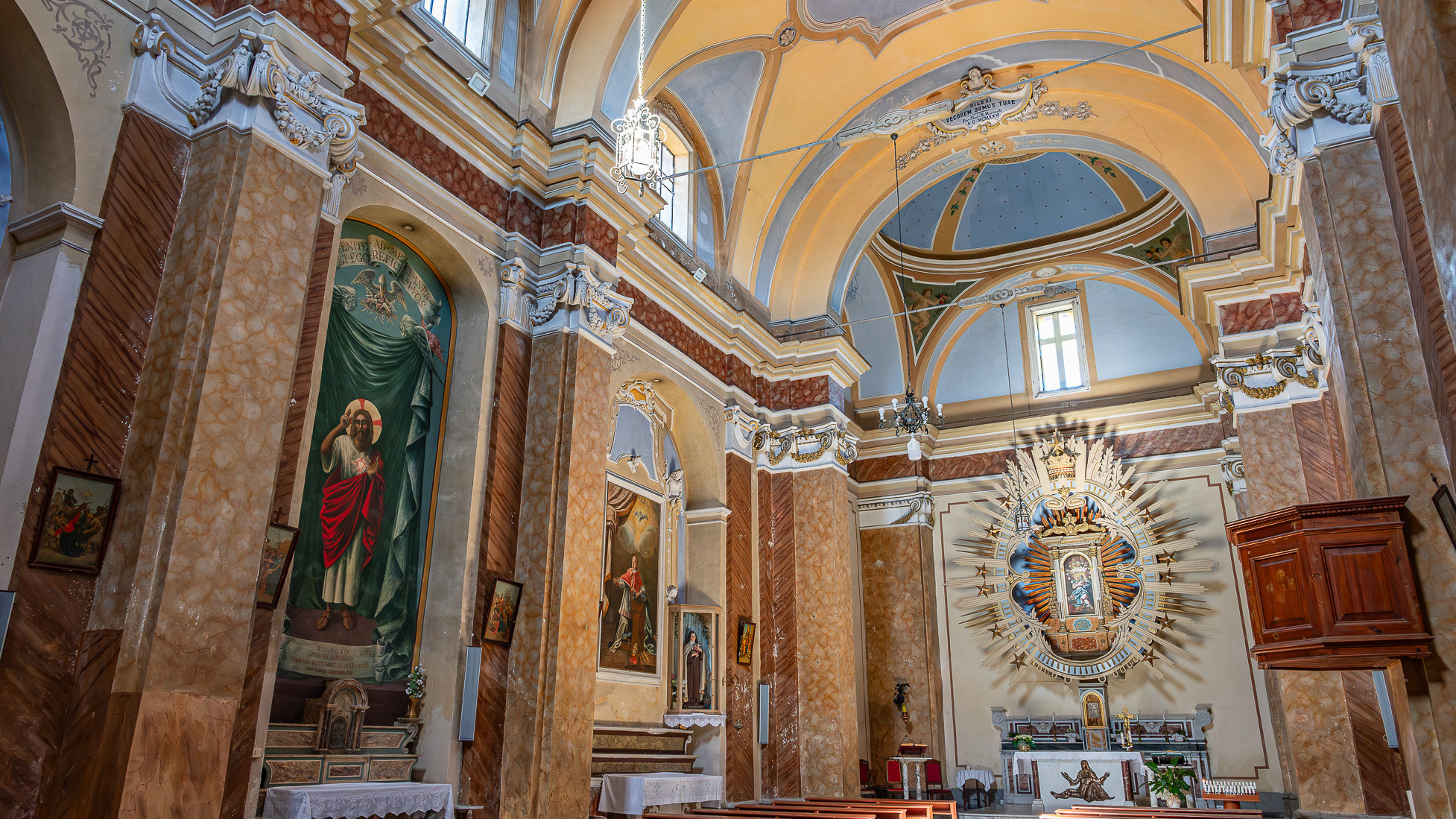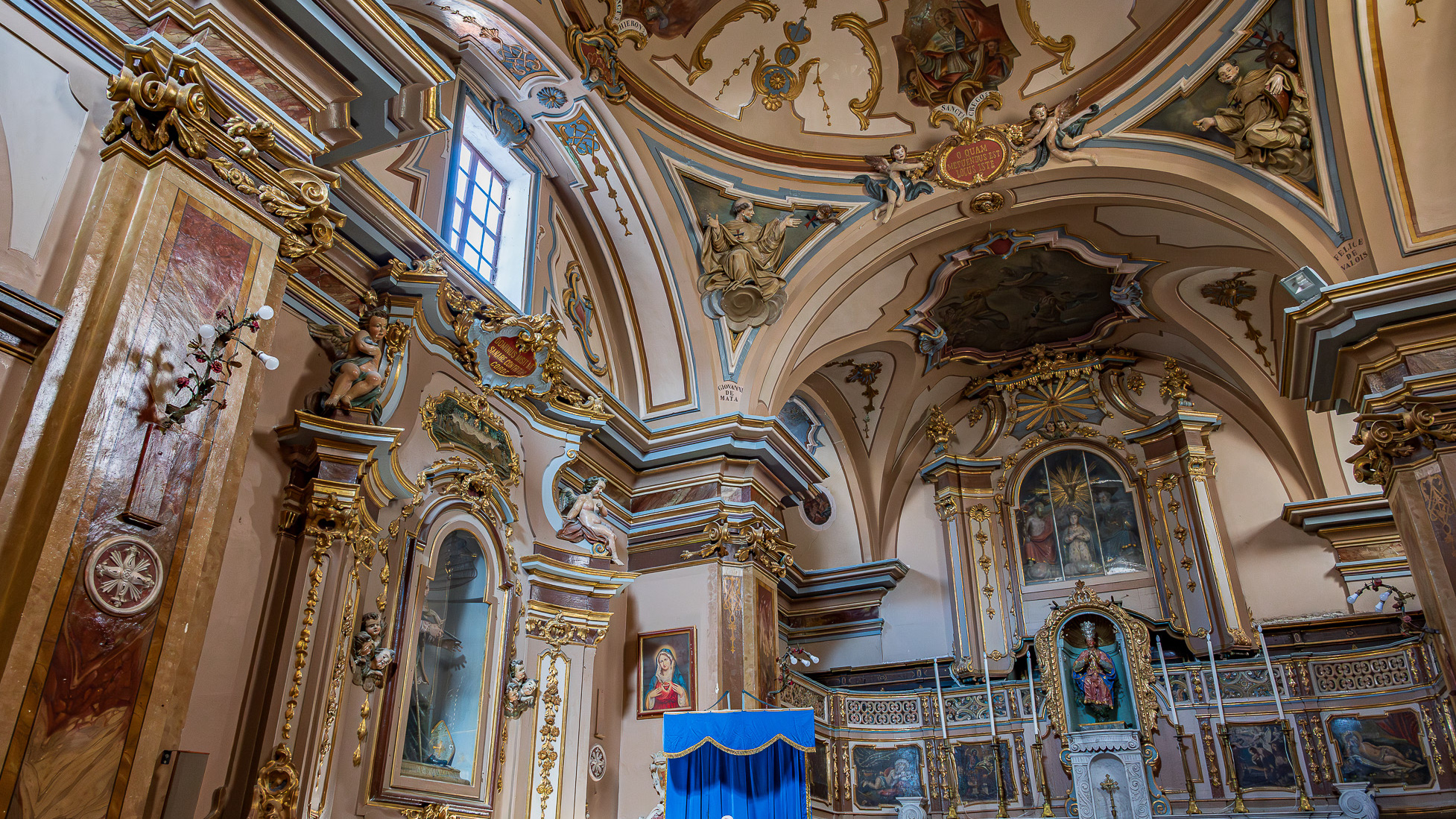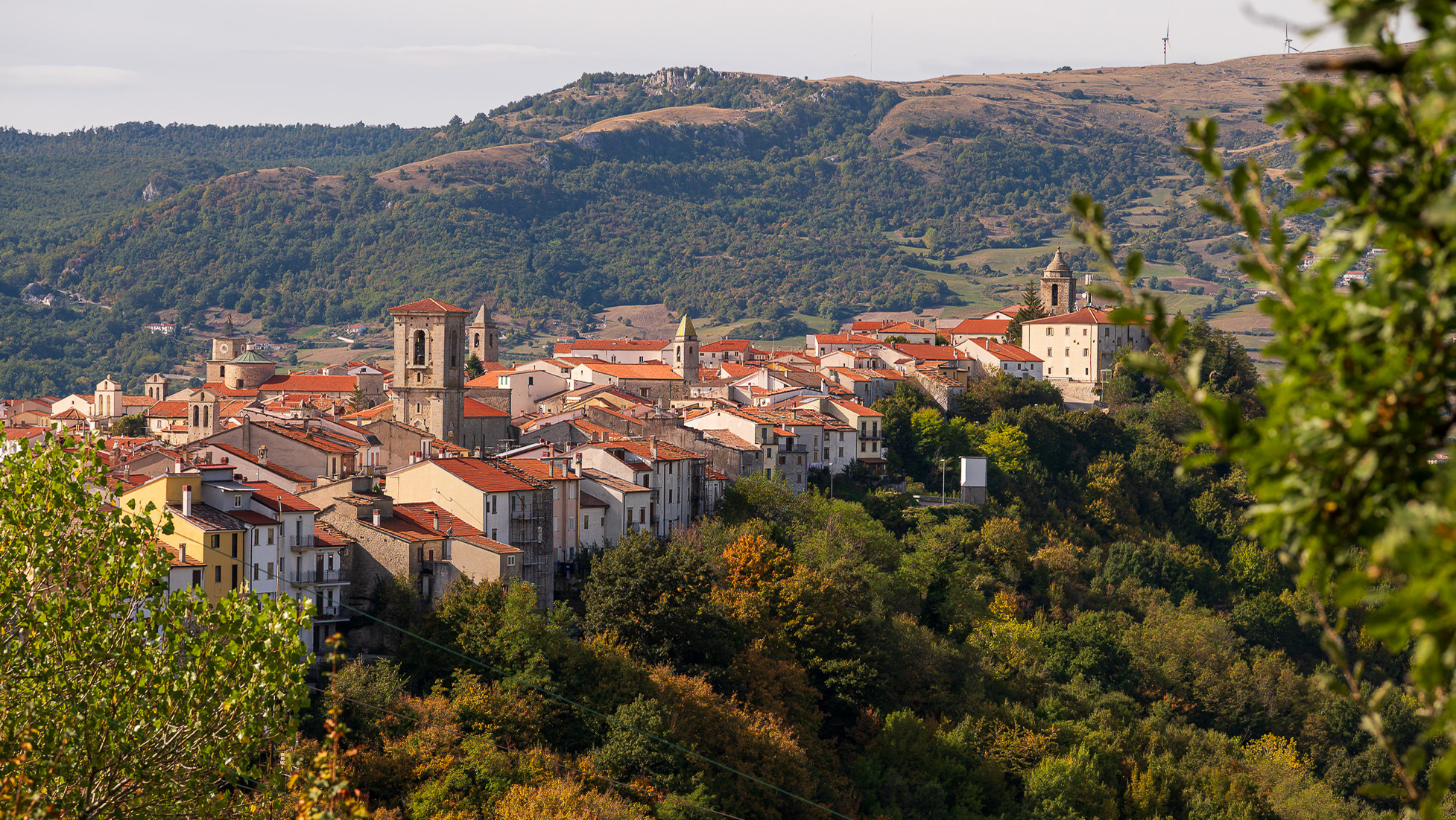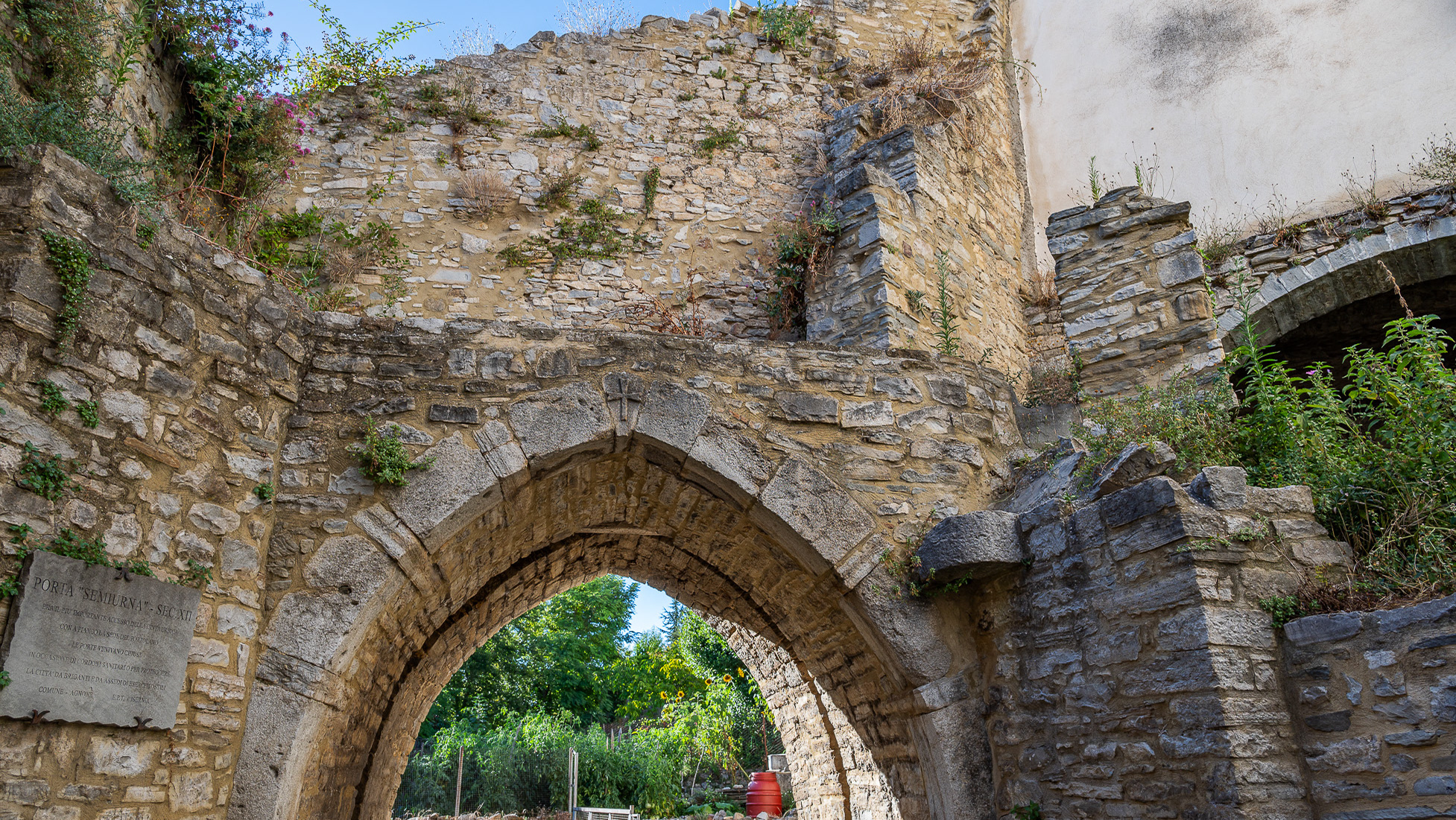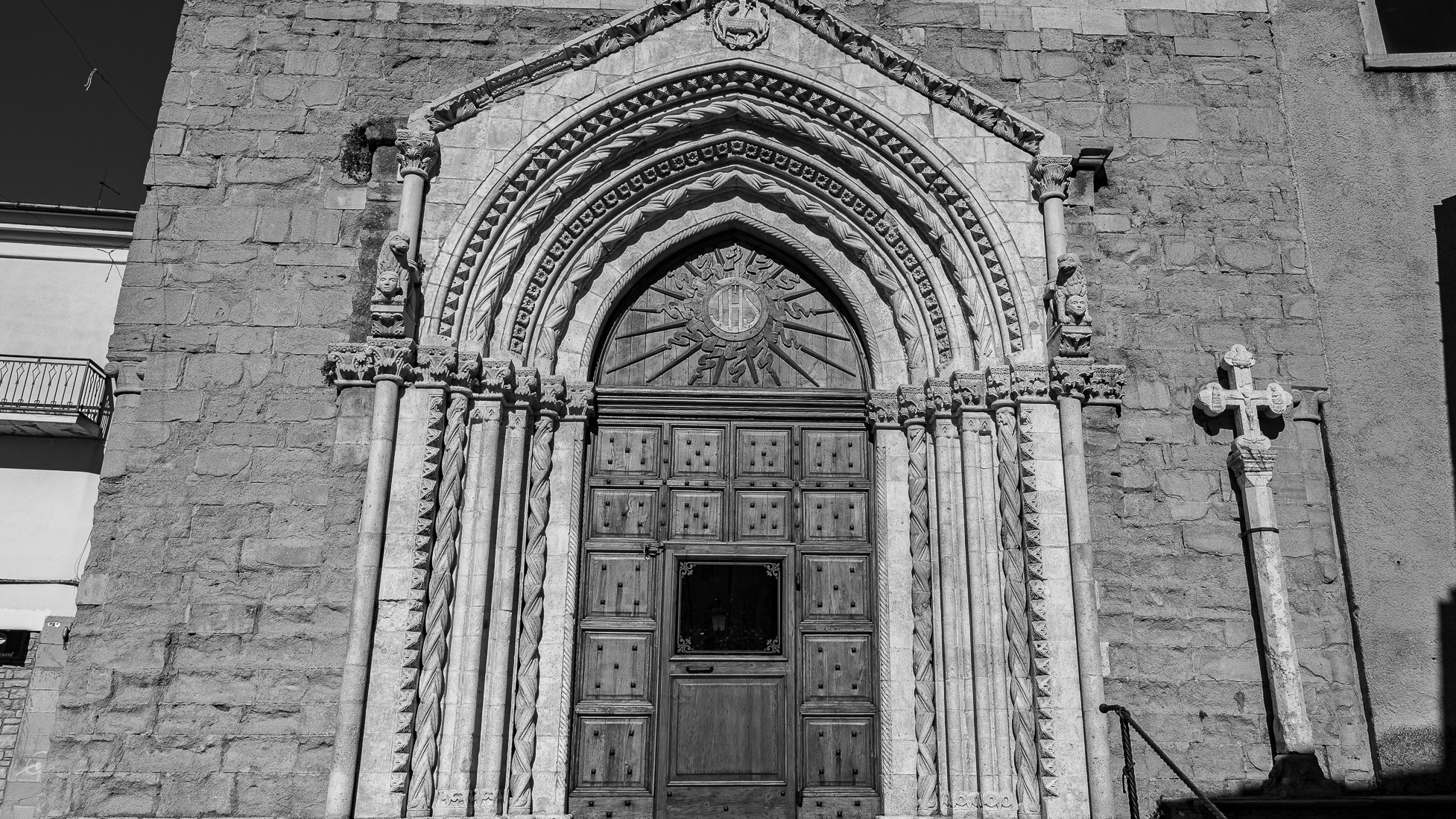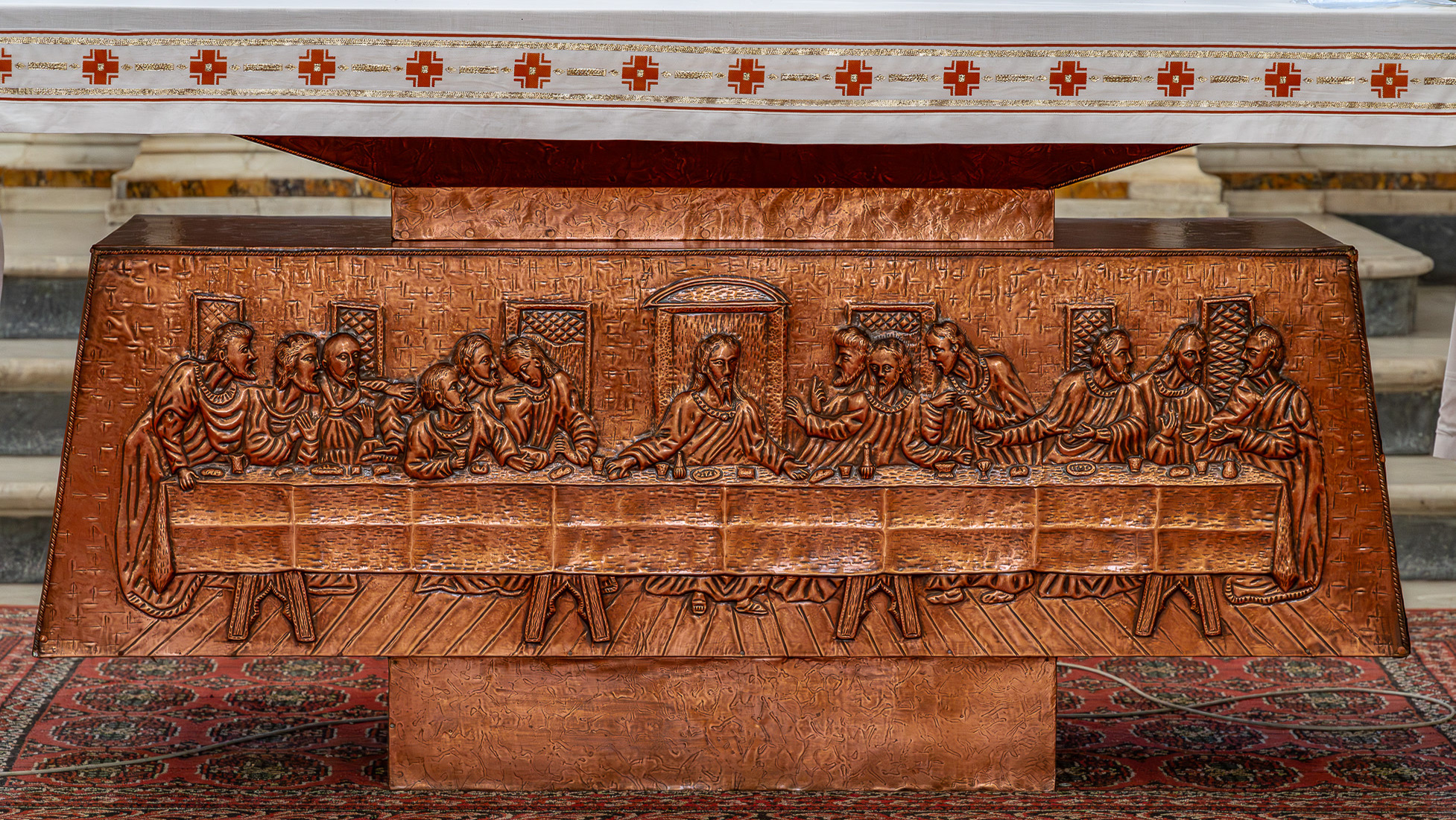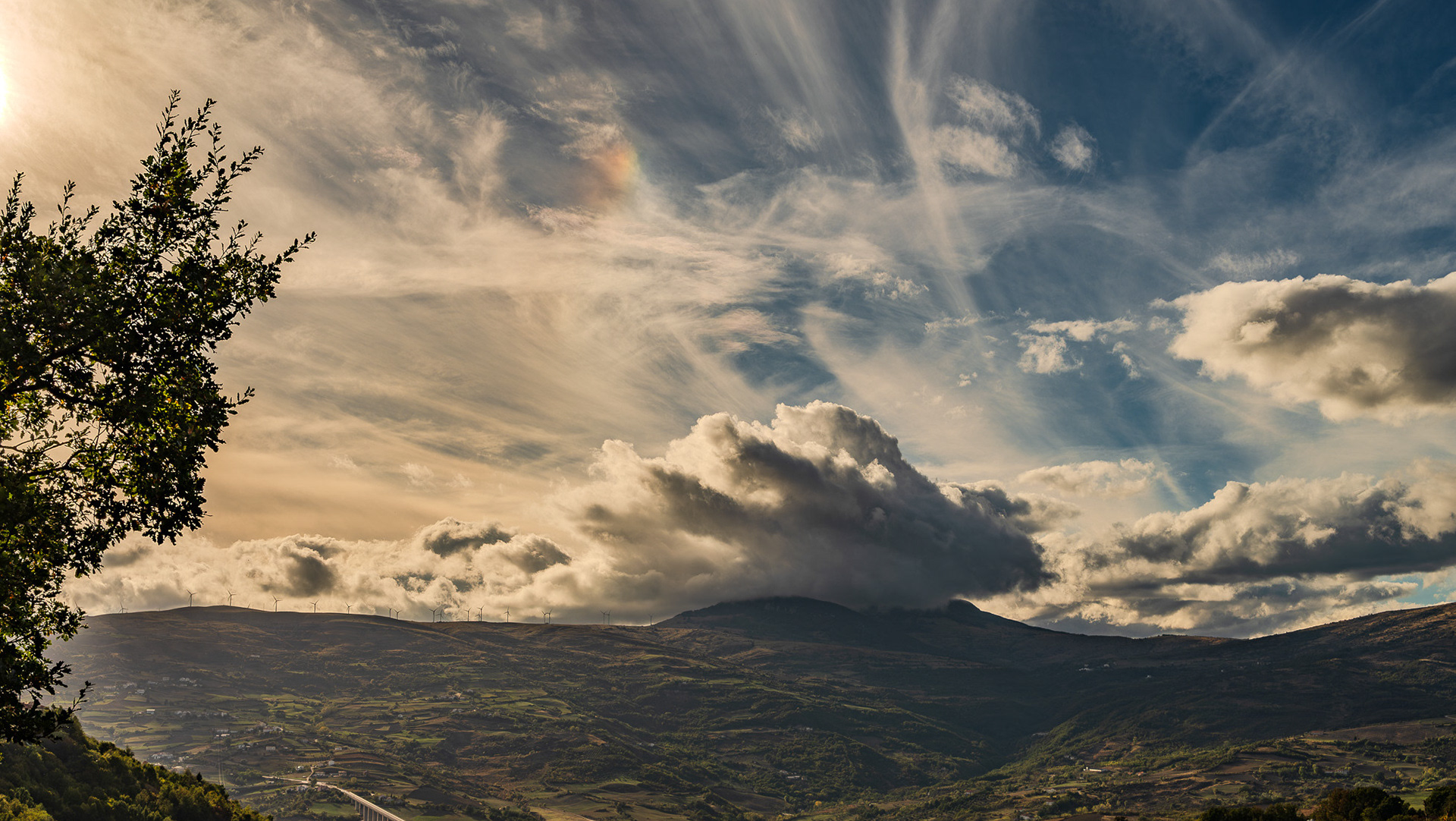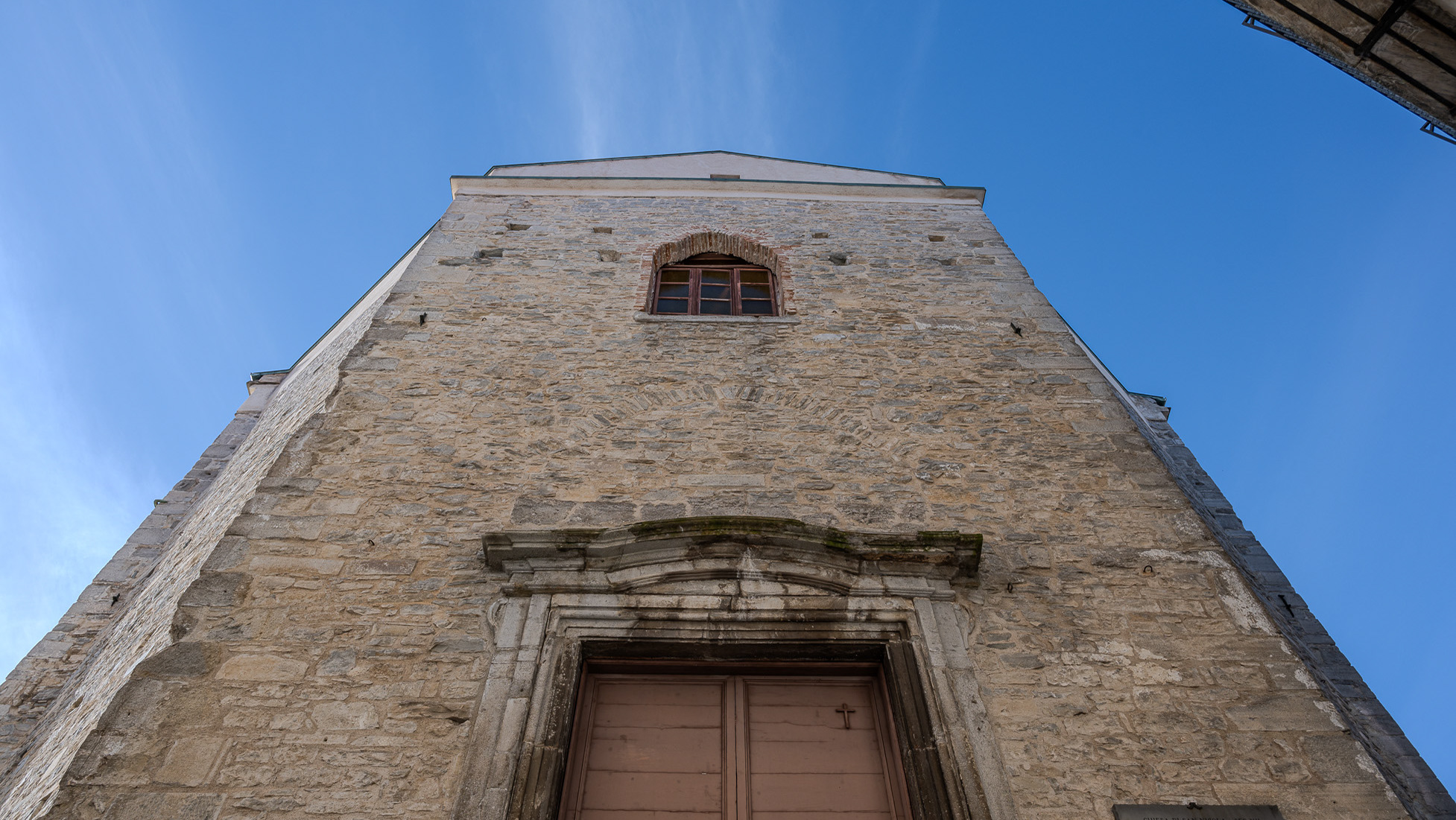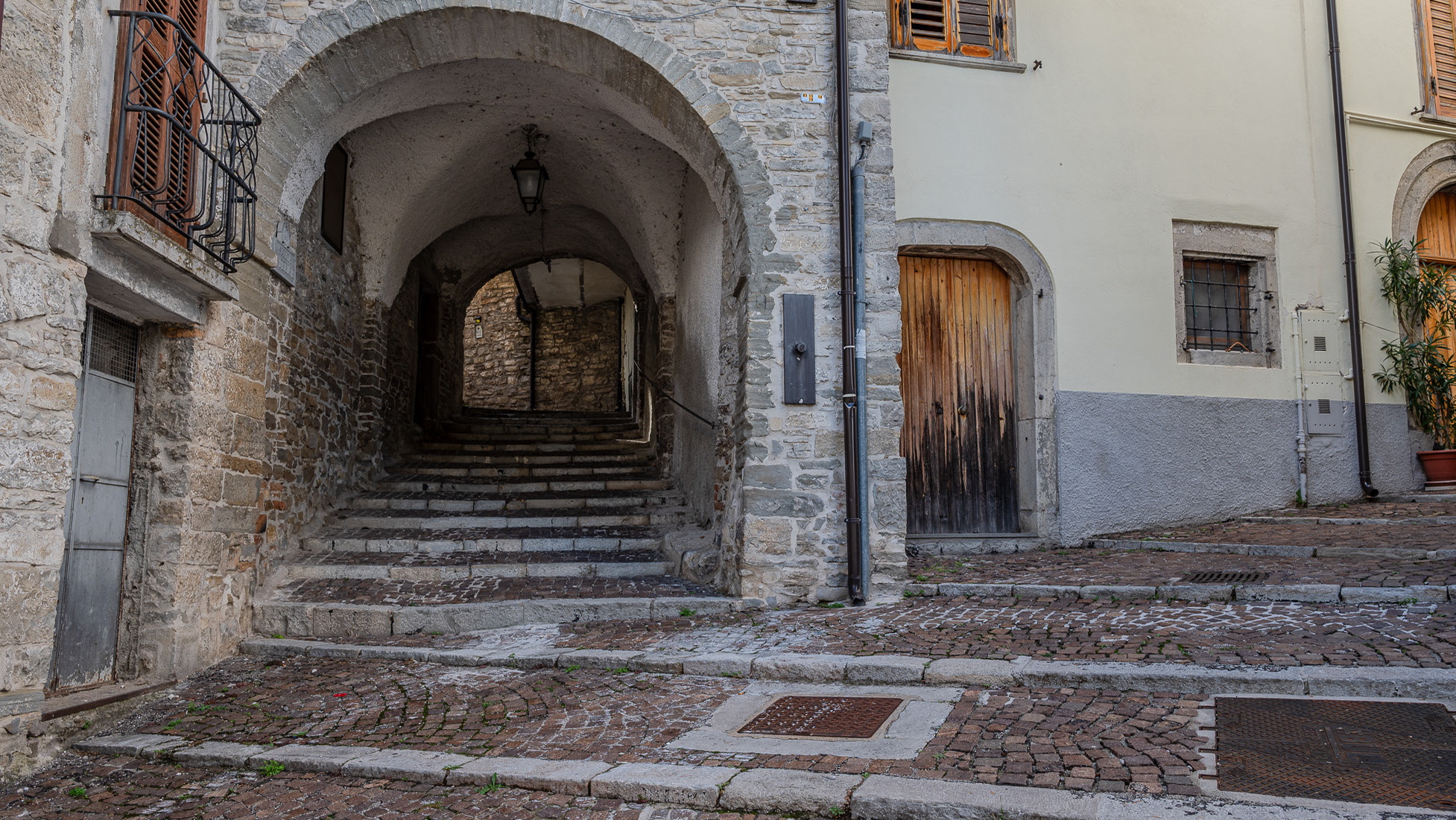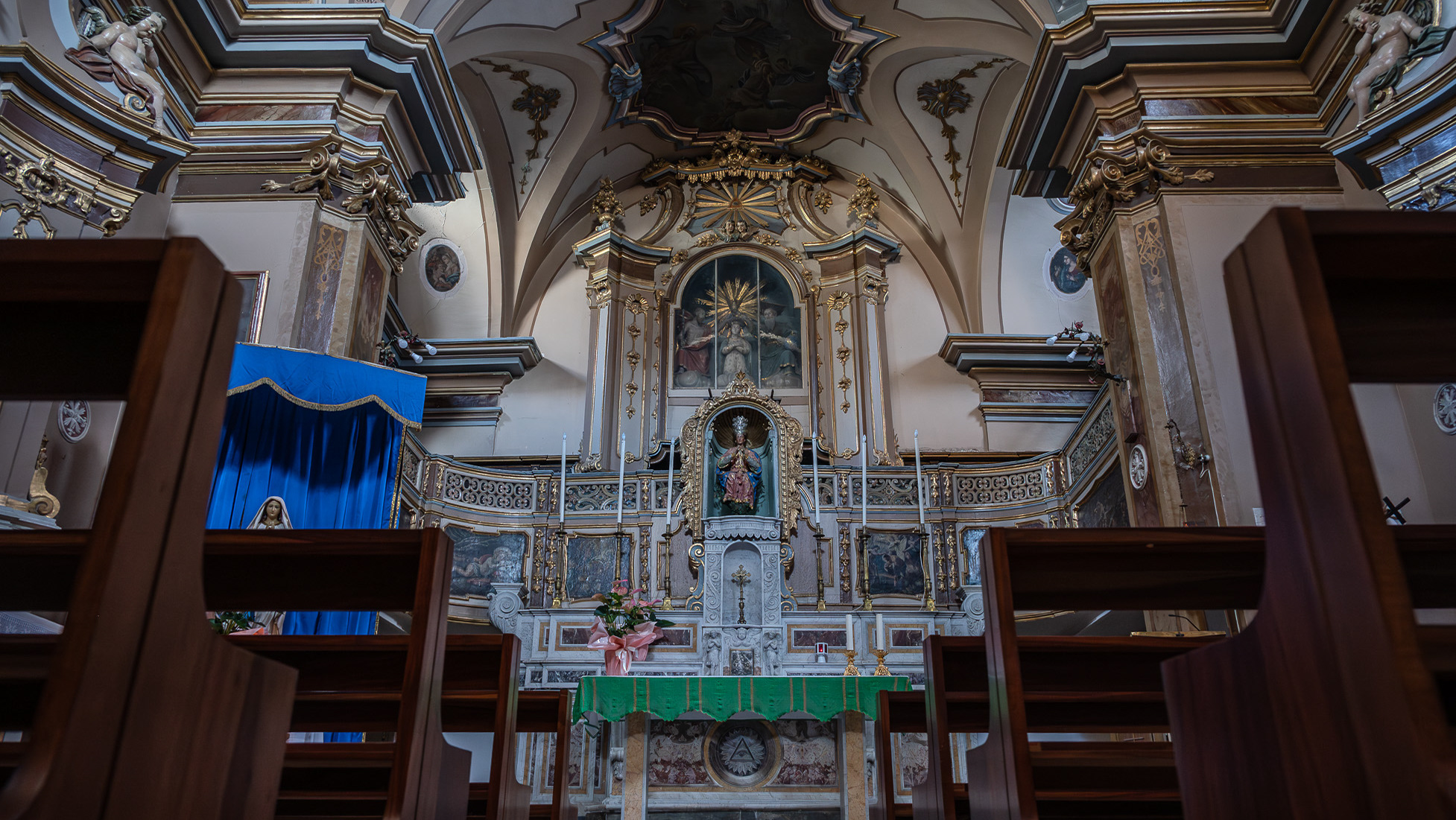Mother Church of San Marco Evangelista #2
On the medieval cardo outside the city there is a lookout transformed into a public park. Next door is the church of San Marco Evangelista. The original Romanesque construction dates back to the 11th century and is connected to the re-foundation of the town which took place under the rule of the Borrello family, linked to the Republic of Venice. The original building was in fact built by Venetians called by Landolfo Borrello. The lack of a semicircular apse and the presence of the bell tower on the bare façade suggest an inversion in the direction of the main axis during construction. The plan is irregular and the nave is single and has no transept, while there are side chapels. A series of contributions from subsequent periods are evident: Venetian Gothic arches precede the main altar, while the portal is Renaissance and the ceiling is polychrome coffered, in Venetian Baroque style. The wooden altars are also Baroque, while other furnishings range from various eras. For example, a valuable statue of the Madonna and Child is from the 13th-14th century while a statue of Saint Nicholas is by the eighteenth-century sculptor Giovannitti. The building was restored by the regional superintendence of fine arts.
You may also like
